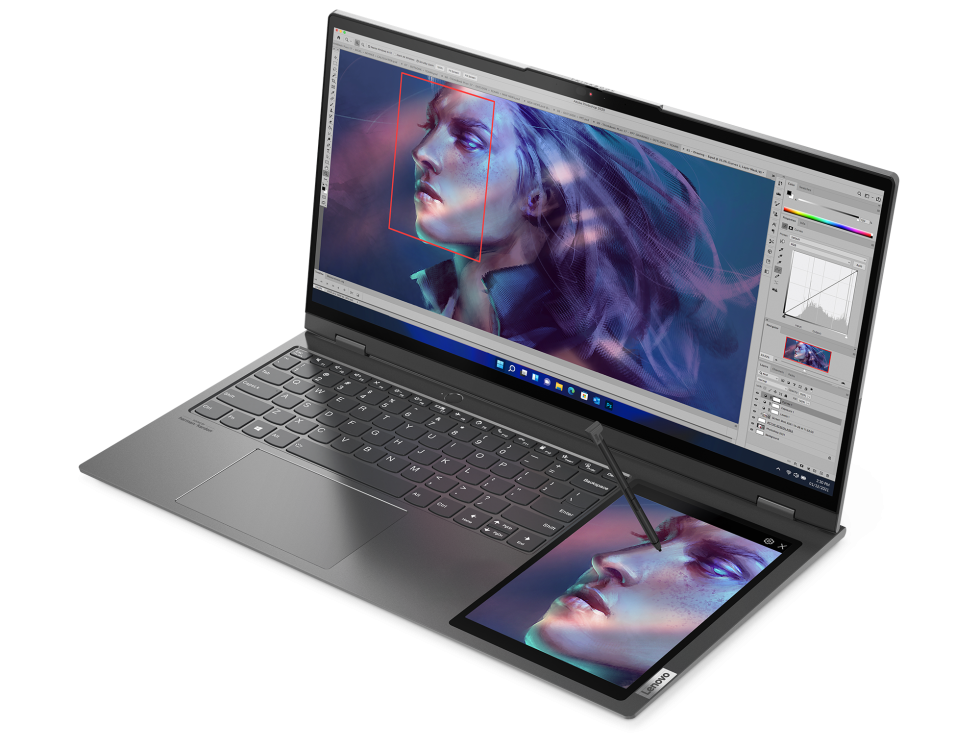
In a world of shiny clamshells and showy convertibles, laptop releases can feel repetitive. Some of the most successful, well-known designs don’t always see massive overhauls from one year to the next. Stick in the latest CPUs or GPUs, maybe claim a slightly cooler build, and call it a day (or year). After all, if it ain’t broke, don’t fix it, right?
The problem with that is, well, it gets boring. And for technology enthusiasts interested in developments that could change how we work, play, repair, and upgrade, it’s imperative that PC makers be willing to take risks.
The laptops below all tried something more adventurous than a components upgrade in 2022. We’ll break down the groundbreaking designs, ideas, and capabilities these systems seek to deliver—and whether or not the risks they took paid off.
Lenovo ThinkBook Plus Gen 3

Premium laptop shoppers are increasingly seeking screens with taller aspect ratios. But Lenovo took things in the opposite direction with its ThinkBook Plus Gen 3, a clamshell with a 17.3-inch, 21:10 primary display. Going even further, Lenovo didn’t let the extra-long deck that the display creates—16.3 inches long—go to waste. Instead, Lenovo popped a secondary, 800×1280 LCD next to the keyboard to create a laptop it claims is uniquely designed for multitasking.
We haven’t seen an ultrawide laptop since 2017’s Acer Predator 21 X curved-screen gaming PC. Acer’s laptop focused on boosting immersion for gamers by making games appear to wrap around them more than a flat-screen laptop. The 2022 ThinkBook, however, targets its stretched screen at workers obsessed with multitasking.
The ThinkBook Plus Gen 3’s smaller screen lets users do things like show thumbnails while working in Photoshop, use a calculator, and take notes. It’s reminiscent of the ScreenPads that Asus has been using for a while in its touchpads and north of some laptops’ keyboards but less advanced.
Did it pay off?
The ThinkBook Plus Gen 3 is a fascinating exploration of the clamshell design that brought variety to laptop selection in 2022. Lenovo didn’t expect everyone to want this laptop or to ignite a wave of ultrawide laptops usurping 16:9 and 16:10 rivals. Since Gen 1, Lenovo’s ThinkBook Plus laptops have been about offering PCs with features that push the envelope and provide over-the-top features that most could live without.
But for the right user, the ThinkBook Plus Gen 3 presents a favorable way to work and organize multiple windows. It also challenges other companies to create designs that aren’t just striking but aim for distinct value.
We’d like to see Lenovo play with the ultrawide PC’s ergonomics. Since it’s so long, it can be hard to balance on a lap. We haven’t tried the machine but worry about our right hand accidentally brushing against the deck’s screen when typing or using the touchpad. The ThinkBook Plus Gen 3 isn’t a lefty-friendly design either.
But Lenovo has revived the idea of ultrawide laptops while bringing a new multiscreen option to users, presenting greater choice when it comes to balancing tasks.








